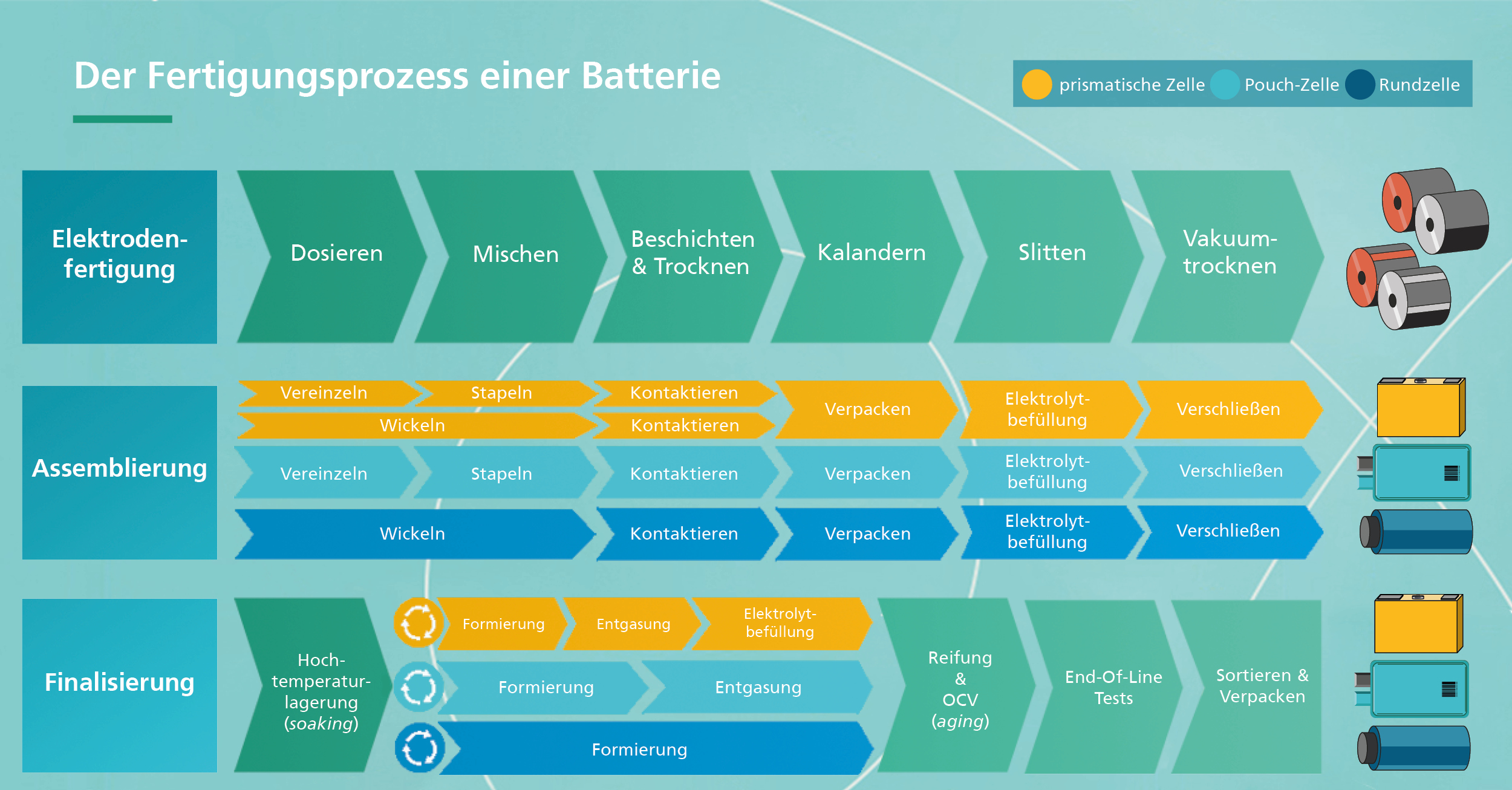Blogarticle
Formation process of lithium-ion batteries: Review paper provides a systematic overview and identifies key influencing factors
The formation process of lithium-ion battery cells is a crucial step that heavily affects their capacity, safety, and service life. However, producing these cells is not only time-consuming but also contributes significantly to energy consumption and overall battery costs. Unfortunately, the final production step of these batteries is not yet fully understood due to several influencing factors. A recent collaborative paper by battery researchers from various universities and research centers titled "Lithium-ion battery cell formation: status and future directions towards a knowledge-based process design" aims to shed light on this topic. The paper emphasizes the critical role of the formation process in the production of lithium-ion battery cells and provides insights for better process design.
The formation process proves to be highly complex - its investigation requires close cooperation between experimental and simulation experts from different disciplines.


This can be illustrated by the so-called SEI layer. The solid electrolyte interphase is a thin layer that forms on the surface of the electrode material during the formation process. It serves as protection between the electrolyte and the electrode surface and contributes significantly to the stability and functionality of the battery. To understand SEI formation, a precise characterization of battery materials is required. The paper emphasizes that material and cell design as well as the formation process are intertwined and should not be considered in isolation. For example, the active battery material's surface properties influence the SEI layer's formation. Targeted surface treatment can therefore lead to an improvement in the charging and discharging cycle.
Simulations are used to analyze forming strategies to gain a better understanding of molecular dynamics. Multiscale models often consider different lengths and time scales in a battery system. These integrate information from the atomic to the macroscopic cell level.
This high experimental and simulation effort makes comprehensive optimization difficult. Therefore, the paper provides a systematic overview of the formation process and its influencing factors. Promising experimental and simulative methods are presented to gain the necessary understanding for a knowledge-based design of the forming process. Research gaps are also identified and a perspective for the development of customized forming processes for current and future battery technologies is shown. This cooperation underlines the importance of interdisciplinary collaboration for progress in battery research.
Published in the journal "Energy & Environmental Science", 2024. Read now open access at:
Authors: Felix Schomburg, Bastian Heinrich, Sarah Wennemar, Robin Drees, Thomas Roth, Michael Kurrat, Heiner Heimes, Andreas Jossen, Martin Winter, Jung Young Cheong, Fridolin Röder.
Last modified:
